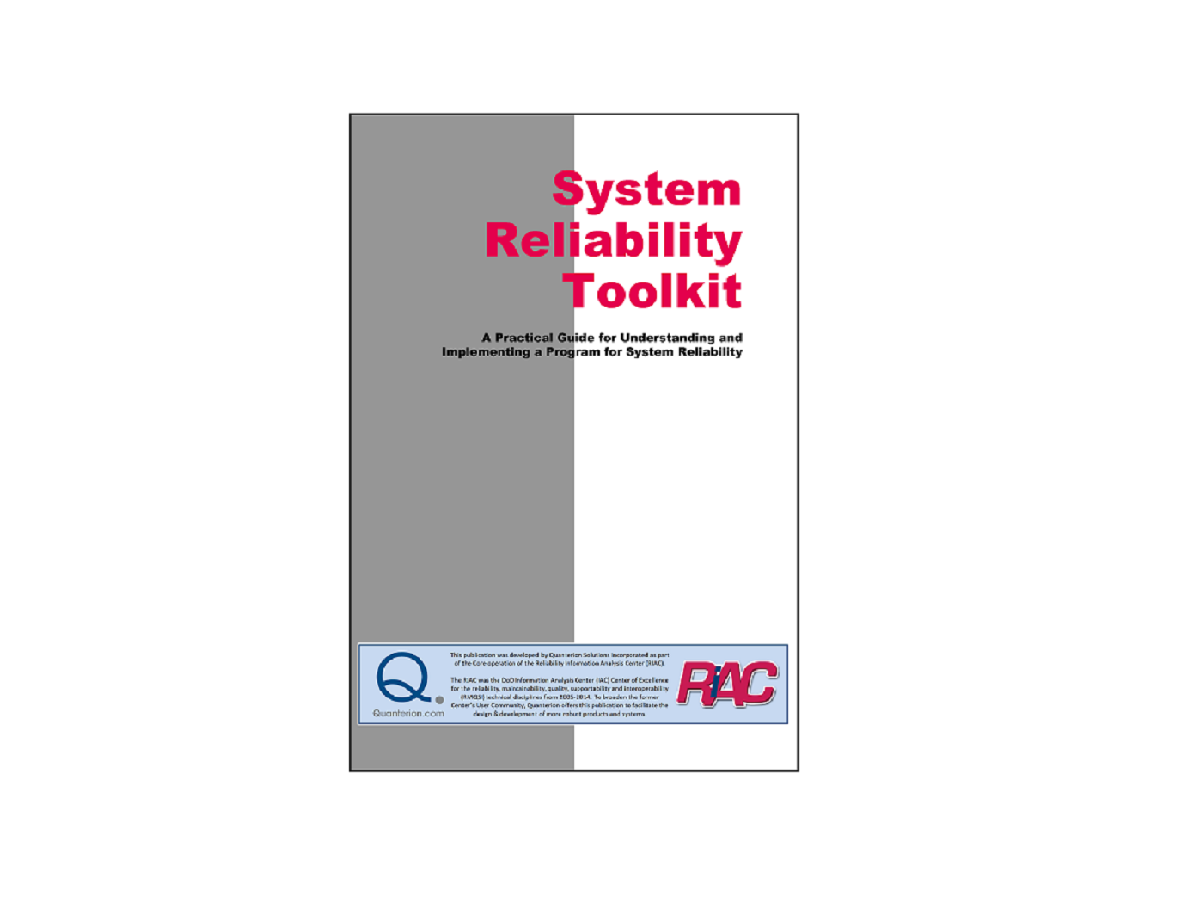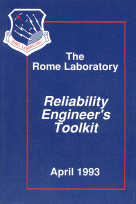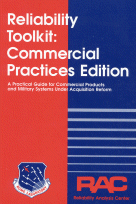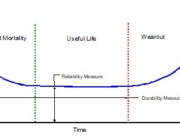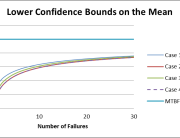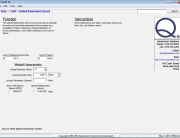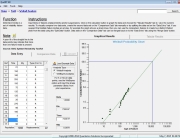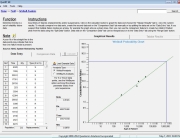How Complete is Your Reliability Tool Set?
Whether you’re developing consumer electronics in a competitive market or ground-based 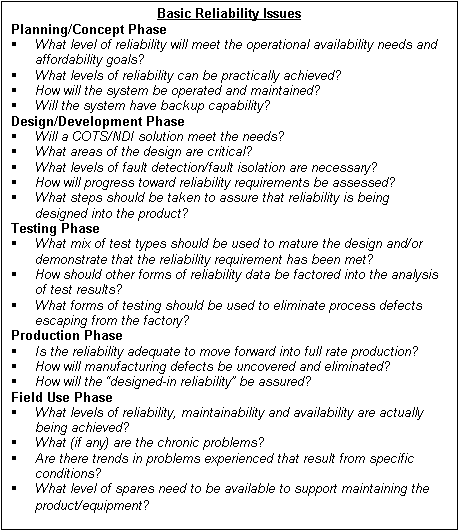 radars for the Government, there are lots of tools to have in your arsenal to help make your designs reliable and maintainable. Using a broad definition of tools, your arsenal should include design rules and procedures, analysis methodologies, test approaches and strategies, and field failure tracking means. Sometimes these are in the form of guidebooks, and sometimes they’re in the form of software tools.
radars for the Government, there are lots of tools to have in your arsenal to help make your designs reliable and maintainable. Using a broad definition of tools, your arsenal should include design rules and procedures, analysis methodologies, test approaches and strategies, and field failure tracking means. Sometimes these are in the form of guidebooks, and sometimes they’re in the form of software tools.
Guidance Documents
For more than 40 years the US Government, and the Department of Defense in particular, was the leader in publishing guidance in R&M. While many of these documents have been abandoned as part of Defense Acquisition Reform, many still exist and continue to be valuable resources:
- MIL-HDBK-338 “Electronic Reliability Design Handbook” – still a winner as a general resource; if you can find the older 1984 version, it’s even got more information.
- MIL-HDBK-217 “Reliability Prediction of Electronic Equipment”, – even though it was last updated in 1995, it’s still the most widely used approach to estimating reliability.
- MIL-HDBK-781 “ Reliability Test Methods, Plans and Environments…….” – a very comprehensive resource for planning demonstration and growth tests including addressing environmental stresses.
Technical Literature
- Up to 1997 the US Air Force Rome Laboratory (previously Rome Air Development Center) was the leading organization chartered with research in R&M. Even though the organization no longer has an R&M mission since becoming part of the Air Force Research Laboratory, hundreds of technical reports document the output of its R&M research program over its 45+years. Check the Defense Technical Information Center (https://discover.dtic.mil) and/or the National Technical Information Service (http://www.ntis.gov) to see if there are some reports that can help you.
- The Proceedings of the International Reliability and Maintainability Symposium (RAMS) is probably the most comprehensive resource for practical R&M approaches and case histories. RAMS proceedings are available through the IEEE at http://www.ieee.org.
- The IEEE Reliability Society Web Site (http://www.ewh.ieee.org/soc/rs/) can direct you to other valuable resources.
- The DoD Reliability Analysis Center publishes guidance documents and databooks on topics of interest in R&M as well with two of the most popular:
- “Reliability Toolkit: Commercial Practices Edition” – this $25 bargain is the third in the “reliability toolkit” series authored by Rome Laboratory and the RAC. (Quanterion is making available a FREE much needed index to the 1995 toolkit; see offer below)
- “Nonelectronic Parts Reliability Data” – this is the most widely used resource for failure rate information on generic mechanical part failure rates.
Standard Texts
At the risk of offending some authors, here are our favorites:
- “The New Weibull Handbook” by Robert Abernethy
- “Practical Reliability Engineering” (Wiley) by Patrick O’Connor
- “Accelerated Testing: Statistical Models, Test Plans and Data Analysis” (Wiley-Interscience) by Wayne Nelson
- “Probabilistic Reliability: An Engineering Approach” (McGraw-Hill) by Martin Shooman
- “Reliability-centered Maintenance” (Industrial Press) by John Moubray
- “Statistical Methods for Reliability Data” ((Wiley-Interscience) William Meeker and Luis Escobar
System Software Tools
While many “integrated reliability software tools” (see below) include a system modeling capability, others are specifically dedicated to this function. The IEEE Reliability Forum contains a quick review of many of them such as SHARPE, MEADEP, CARMS, and RAPTOR . Also, a paper comparing these and others originally published by the Society of Reliability Engineers (SRE) is available at http://www.enre.umd.edu/rms/simulators.htm.
Integrated R&M Software Tools
Automated R&M tools have come a long way since the early 1970’s versions of MSI’s “Predictor” and “RADC ORACLE.” The following companies offer these tools, typically in modularized form, that do R&M analyses from basic predictions using MIL-HDBK-217 and Bellcore (now Telcordia) procedures all the way through life-cycle cost analyses.
- Relex Software Corporation
- Item Software
- Isograph
- ALD
- Oerlikon-Contraves
Specialized R&M Tools
The most common specialized R&M tools deal with Weibull Analyses, which in itself is a very powerful approach to many reliability problems. Two companies seem to dominate these tools:
- ReliaSoft
- Fulton Findings (tool now packaged as part of Relex suite)
| A New Tool: Quanterion Automated Reliability Toolkit (QuART) Quanterion Solutions principals were the leaders, and the primary authors, of the very popular “reliability toolkit series ” of guidebooks (more than 20,000 copies distributed) so it was a logical step that they continue to evolve the series.QuARTrepresents a fourth generation automated reliability toolkit.
|
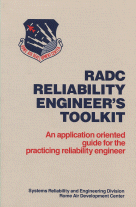 |
|
|||
|
|
was released by Rome Laboratory in 1993, but was distributed by the Reliability Analysis Center (RAC) (available for free download below).
|
||
- “Quanterion Automated Reliability Toolkit (QuART)” – The Quanterion Automated Reliability Toolkit or QuART represents the next logical step in the toolkit series dedicated to providing practical reliability, maintainability and quality (RMQ) knowledge. It provides automated versions of many widely used procedures and methodologies in RMQ from the hardcopy series as well as other sources. Like the earlier toolkits, QuART is intended to be used as a daily reference, but now on the engineer’s computer desktop instead on the engineer’s bookshelf. In addition to the automated tools, RMQ definitions and acronyms, the tool also includes a long overdue index for the 1995 hardcopy version still being marketed by RAC. (See the offer below to download a FREE demonstration version of this new software). Some of the tools included are conceptual reliability prediction, reliability activity tailoring, redundancy calculator, parts count reliability prediction, reliability test planner, confidence interval calculator, design of experiments, Weibull Analysis and spare parts calculator. Plans are already underway to expand the toolset.
“Free Downloads” – Quanterion is making available the following FREE downloads from its web site.


